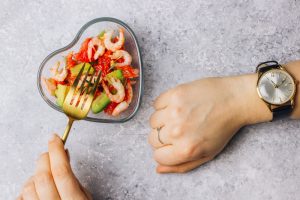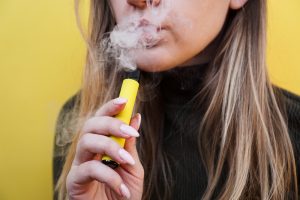Body piercings among adolescents and adults have been gaining popularity for various reasons. It may be for spiritual or cultural purposes, as a form of expression, a way of art, for aesthetic value, or for sexual pleasure.
It is important to discuss the processes, risks, and management of piercings in order to prevent wound complications or infections. In conservative areas of Asia, other parts apart from the ears are still taboo and deemed inappropriate. On the contrary, some countries incorporate body piercings as part of their tradition. A good example is the Thaipusam Festival in Singapore and Malaysia, in honour of the Hindu god, Lord Murugan.
Piercing Variations
- “Pocketing” – the ends of the piercing jewellery are embedded into the skin, exposing only the middle part

- Ear gauging – the ear lobe piercing is gradually stretched to accommodate bigger jewellery such as plugs or tunnels
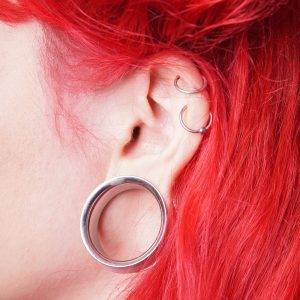
- Transdermal or Microdermal – one end of the jewellery is placed on top of the skin, and the other end lies below
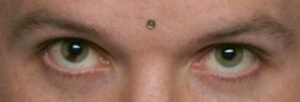
Site-Specific Types
The position of a piercing depends on the individual and can be done on any part of the body as long as it is done using the right techniques and with appropriate and sterile tools. Here are some of the common body areas to get pierced:
- Ears
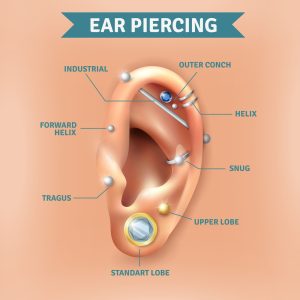
- Nose
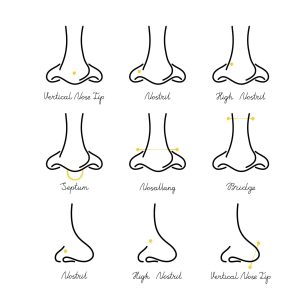
- Oral

- Eyebrows
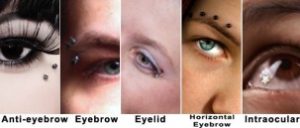
- Belly button
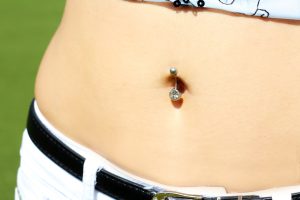
Other areas that are commonly pierced are the following:
– Nipples
– Chest
– Genitals
Health Risks of Body Piercing
Careful research when selecting a preferred piercing artist or studio should be a priority to ensure that the environment and protocols are sanitary. A sterile technique should be utilized such as the use of sterilized needles and disposable gloves. Localized infection is very common, especially in the belly button and ear areas. The isolated pathogens are staphylococcus aureus and P. Aeruginosa. P. Aeruginosa is often associated with contaminated aftercare solutions or the use of spring-loaded piercing guns.
Systemic infections are also a possibility, especially those done by amateur artists or due to a lack of proper aftercare. Skin reactions may include allergic contact dermatitis, keloids and hypertrophic scars. Trauma is also a health risk in instances when the jewellery gets pulled or caught in clothing or hair. Site-specific risks and jewellery hazards should be explored and discussed with the piercing artist. Some examples include gingival recession and localized periodontitis in oral ones, hematomas or aspiration of nasal jewellery, breast abscesses in nipple piercings, priapism or paraphimosis in genital piercings, and the need for ear restoration in ear gauging of the ear lobes.
Aftercare
Infection risks can be reduced when following proper aftercare. There are no clinical trials or research materials to establish the superiority of one aftercare solution, method, or technique. Every piercing artist has different experiences so their suggestions may vary. Expected healing time, common discomfort and swelling should be discussed with your piercing artist.
The most recommended aftercare method is using saline solution and avoiding harsh soaps and alcohol altogether. Saline solution (0.9%) is non-irritating, non-drying, and well-tolerated by all skin types. Typically, piercing artists recommend cleaning the pierced area twice a day; once in the morning and once at night. Unscented baby soaps are also an alternative and should be used sparingly. Most piercing artists advise against the use of hydrogen peroxide, betadine solution, or rubbing alcohol as these are strong chemicals that may also kill good bacteria that fights infections and promotes healing. It is important to perform all aftercare with clean hands that have been disinfected using antibacterial soap and water.
The following are common irritants and should be avoided, depending on the relevance of the piercing site:
– Wearing earphones or headphones
– Wearing make-up and using hair products
– Tight clothing, lace material, woven fabrics
– Body creams, moisturizers, perfumes, serums
– Harsh facial washes or genital soaps
– Exposure to other bodily fluids
– Rotating, tugging, and frequent touching of jewellery or pierced area
– Heavy intercourse or lubricants (genital piercing)
– Spicy foods, acidic fruits, alcohol intake (oral piercing)
Maternal Adaptation
Pre-existing healed piercings are unaffected by pregnancy. However, distortion of the piercing is expected around the breast or abdomen when these areas start to enlarge. In general, piercings in the nose, oral cavity, nipple, belly button, and genitals are typically removed to avoid interfering with childbirth and maternal care.






